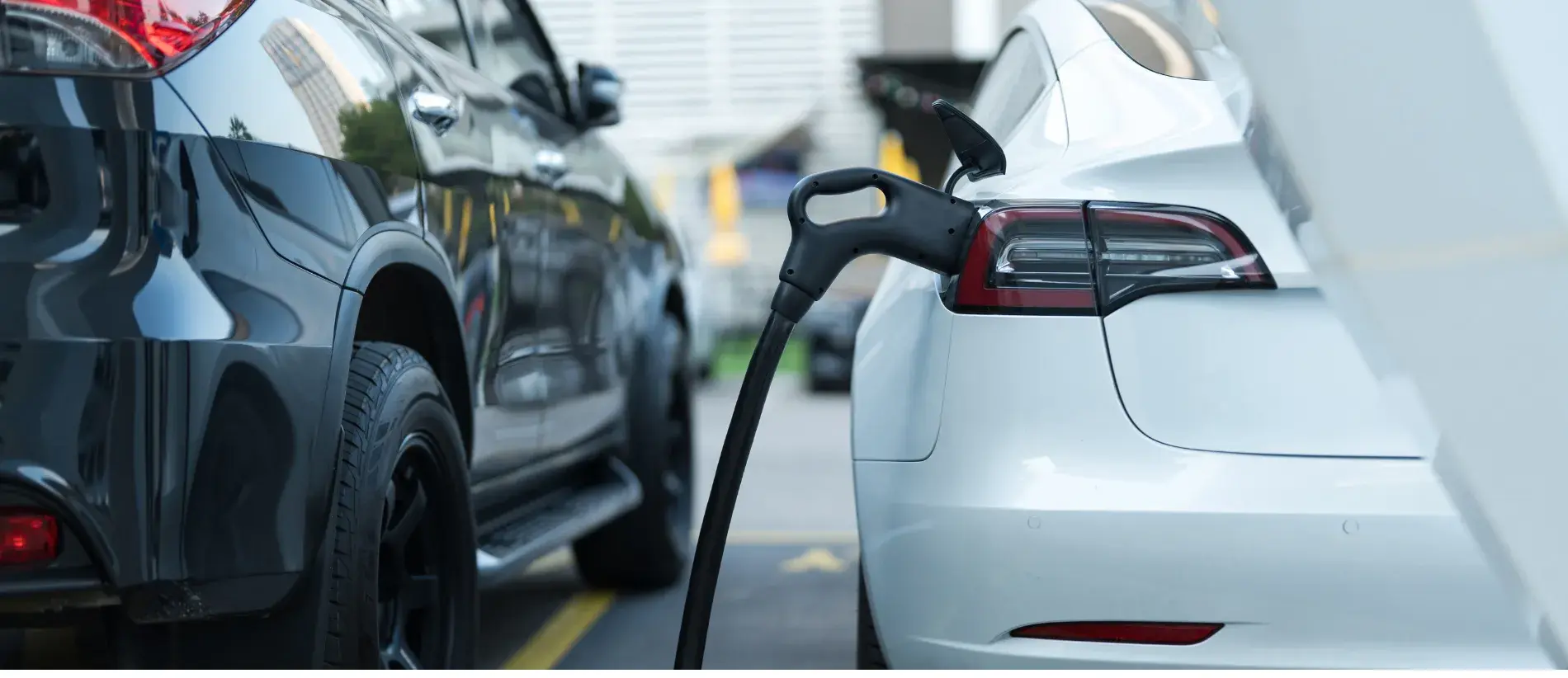Skip to main content
ARTICLES / AUGUST 29, 2025
The Other Side of Electric Vehicles
3 MIN READ
Electric vehicles (EVs) are gaining momentum in the Philippines, with estimates projecting sales to reach 20,000 units in 2025. This figure marks a 7% increase from last year’s total of 18,690 units and represents 4% of the estimated 500,000 vehicle purchases. The growth, as reported by the Chamber of Automotive Manufacturers of the Philippines, includes battery electric vehicles, plug-in hybrids, and hybrid electric vehicles.
Emphasis on sustainability
A key driver behind the rise in EV sales is the growing public interest in sustainability. According to a Statista report, increasing awareness of environmental issues is encouraging Filipinos to seek ways to reduce their carbon footprint and embrace cleaner modes of transportation. Policy mandates such as the Electric Vehicle Industry Act (R.A. 11697) require a greater share of electric vehicles in both government and corporate fleets. Additionally, government incentives, including tariff reductions and exemptions from number coding, make EV ownership more attractive to consumers.
Emerging risks with EV use
While the Philippines welcomes the shift to sustainable transportation, experts warn of emerging risks for owners of electric and hybrid vehicles. A major concern lies in the batteries that power these cars. Battery packs, typically made from lithium-ion or nickel-metal hydride, can become safety hazards if damaged, mishandled, or poorly maintained.
The risk of fire-related incidents involving hybrid and EV vehicles is particularly significant as adoption increases on Philippine roads. Although traditional gasoline vehicles still account for most fire-related cases, studies show that hybrid vehicles are more than twice as likely to catch fire compared to their gasoline-powered counterparts, often due to battery malfunctions. In contrast, fully electric vehicles currently present a lower fire risk thanks to stricter fire safety standards. However, this risk may rise over time as older EVs begin to populate the roads.
EVs also contain high-voltage components and cabling that can deliver fatal electric shocks. Some parts may retain dangerous electrical charges even after the vehicle has been powered down. Large battery packs pose manual handling risks during removal or replacement and can release explosive gases or harmful liquids when damaged. Furthermore, their electrical systems have the potential to interfere with medical devices such as pacemakers.
Workplace risks related to supporting EVs are also becoming more evident with their growing presence. These include risks during repairs, roadside assistance, fleet operations, and even vehicle valeting. Unlike traditional combustion engine vehicles, electric and hybrid vehicles require updated protocols, specialized training, and the right safety equipment. Businesses in the transport, automotive service, and fleet management sectors must ensure they are fully prepared to manage the unique hazards these vehicles present.
The future of mobility in the Philippines is moving in the right direction, but progress must be matched with preparation. The pursuit of sustainability must go together with responses and standards addressing operational and safety risks. Vehicle owners must recognize that hybrids and EVs come with both advantages and challenges. Adequate training and preparedness are essential for mechanics, drivers, first responders, and fleet managers to safely navigate this evolving landscape. Overall, the true impact of sustainability lies not just in innovation but in our readiness to manage its risks. Striking the balance between progress and protection will define the success of EV adoption in the years to come.
